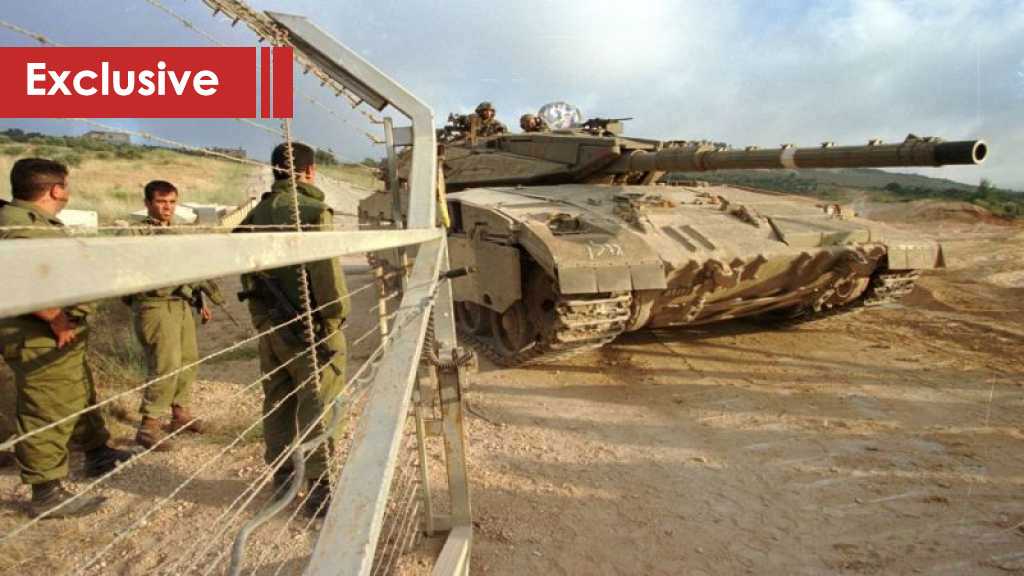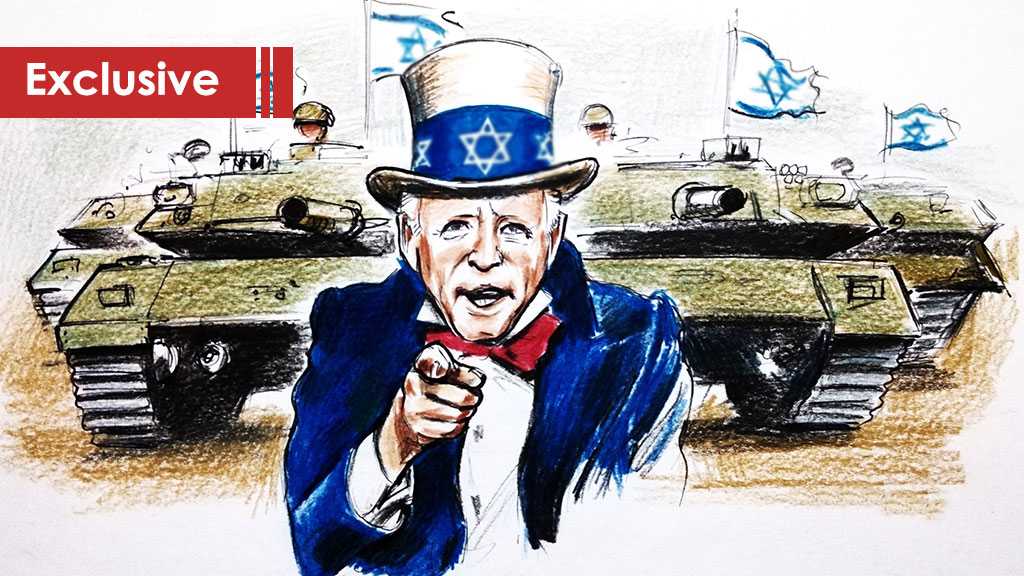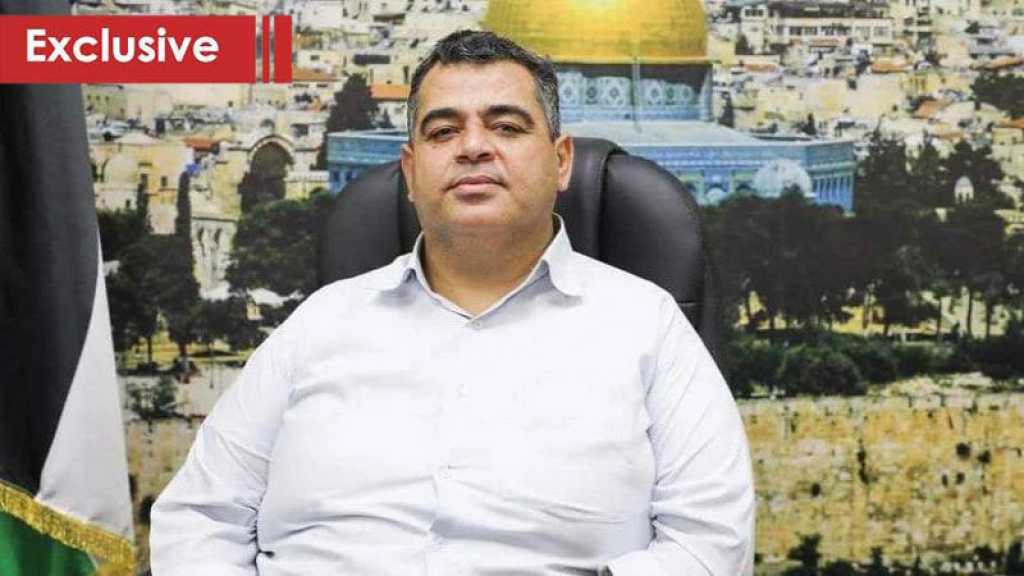The Lahad Army after Liberation: Incurable Betrayals

Latifa Al-Housseini
Some 2,400 Lebanese collaborators live in “Israel” today. They fled defeated on May 25, 2000. Delving deeper into their current living situation reveals that betrayal only leads to humiliation and disgrace.
Some of them converted to Judaism and abandoned their Christianity or Islam. Others enlisted in the “Israeli” army or the reserves. Some are begging for help to secure their daily bread. Others embraced their “Israeli nationality” and dedicated themselves to defending the entity and confronting attempts to strip it of legitimacy. There are also many who complain about gross negligence.
In 2022, the “Israeli” enemy recognized what the Lahad militiamen gave them. It was 22 years after the liberation of southern Lebanon and the defeat of the Zionists and their collaborators from the Antoine Lahad Army. For more than two decades, “Israel” ignored their voices. And then suddenly, it was ready to spend about $160,000 [the price of an apartment] for each fighter who carried arms and fought shoulder to shoulder with “Israeli” soldiers during the period of occupation of southern Lebanon.
But the money came with string attached. The former fighter had to live in one of the settlements. 400 members of the Lahad Army received the financial assistance, but their movement within the entity shows how they struggled to extract what they considered natural rights in exchange for their “sacrifices”.
The very existence of the Lahad militiamen and their families is dependent on their immersion in “Israeli” society. There are those who try and make a distinction between the collaborators and their families. But there is no room for such a distinction between the collaborator father and his son, who grew up in his footsteps and absorbed in the “Israeli” entity the definition of betrayal and appeasement of the enemy of the nation and humanity.
There are many questions surrounding the community of the Lahad collaborators settling in “Israel”. Which settlements do they reside in and what professions do they practice? The most important thing is whether they were able to integrate with the “Israelis”.

Where do the Lahad militiamen live?
The Lahad militiamen and their families have lived in the settlements of Kiryat Shmona, Ma'alot Tarshiha, Nahariya, and the cities of Tiberias, Haifa, and Safed since 2000. They struggled to create living conditions. They thought they would be embraced quickly, but relying on the enemy hasn’t helped. They were humiliated for a long time until they obtained a couple of shekels that they relied on to buy basic necessities. This was the case for the vast majority. A small group chose to convert to Judaism and embrace all of the enemy’s religious, social, political, and military beliefs.
The gravity of betrayal and its punishment
In an interview in 2022, the head of the so-called Lebanese community in Israel, Nabih Abu Rafi’a, declared: “We did not reach the dream we all dreamt of.”
These words highlight the consequences for everyone who chooses disgrace and dishonor over struggle and expelling the occupier.
In 2023, the Jewish News Syndicate reviewed the situation of the Lahad collaborators in “Israel”. According to the Syndicate’s assessment, the Lebanese who allied themselves with “Israel” remained alone and afraid. The Syndicate met "Eddie" [50], a collaborator who fought in southern Lebanon. The latter confessed how he felt about moving to live in the entity.
“Whether I stay in ‘Israel’ or move to the Americas, I am still a stranger in a foreign land,” he said.

The fight over “rights”
Confusion and humiliation characterize the lives of the Lahad collaborators in “Israel”. Kern Doten, a Zionist writer for “Israel” Hayom, touched on the issue in an article he published in 2022.
He wrote that the members of “the South Lebanon Army were outside the circles of the elite and were weak after the shock.”
“They needed restitution, to fight for rights, to knock on the doors of the ‘Israeli’ establishment, when the Ministry of Security [war] does not recognize them. There is a betrayal of military values when it comes to the concept of ‘brothers in arms.’ When it was time to flee, ‘Israeli’ soldiers suddenly disappeared. They blew up their bases and weapons to prevent them from falling into the hands of Hezbollah, leaving them defenseless,” he added.
A fight for “rights” is at the heart of the collaborators’ hardship. This is evident in numerous interviews and journalistic investigations shown on “Israeli” media outlets. The “Israeli” website Davar1 interviewed Samer Sharaf al-Din, a Lahad Army militant, in 2021. He had many complaints.
“I served for ten years, and I do not receive assistance. I was in the same camp with the ‘Israel’ 'Defense" Forces. I was on the receiving end of the same missile from the same enemy. Today, everyone manages their affairs on their own, everyone lives on their own. We did not ask for a car, just a roof over our heads. This provides us with psychological calm and comfort,” he said.
Before the “Israeli” government granted compensation – 22 years overdue – to the fighters of the Lahad Army and decided to inaugurate a memorial for them, give them war medals, and even establish a museum for them and for the Operation for the Safety of the Galilee [the invasion and occupation of Lebanon] in the “Metula” settlement, they grew louder in their demands. Hence, the “Israeli” authorities assigned Reserve Brigadier General Yigal Bresner to handle the file, and the Lahad collaborators continued to beg.

“Israel” threw us out on the street!
According to a 2017 report on “Israeli” Channel 2, authorities neglected a third of Lahad Army fighters. Fadi Mansour, one of them, described the deliberate “negligence”.
“They all made promises and promises and promises, but when we actually reached the point where we needed them, ‘Israel’ threw us out on the street. We have been in ‘Israel’ for 17 years, and none of us are working in a respectable place. We are either working in factories, in construction, or in restoration.”
Mansour went on to explain that he goes “to the Arab part, and they tell me, ‘You are a traitor.’ I go to the ‘Israeli’ part, and they tell me, ‘You are an Arab.’ I am not sorry that I am in ‘Israel’, but the government has really failed us completely.”
For his part, Claude Ibrahim [a militiaman in the Lahad Army] told Channel 2, “One person committed suicide because of the situation. Because of their dignity, the people [the Lahad collaborators] are tired of asking and talking, and there is no one to ask from.”
Lahad collaborators tossed between ministries
Meanwhile, different “Israeli” ministries shift responsibility for the matter. These include the war ministry, which only helps 200 Lahad families, the so-called Ministry of Aliyah and Integration [immigrants], the Ministry of Interior, the Ministry of Finance, and the Ministry of Religious Services, as stated by KAN channel in 2018.
“Israeli” authorities intended to separate the Lahad collaborators as soon as they arrived. In 2001, they were divided into two groups:
The officers: those with ranks starting from company commander and above and those who assisted the “Israeli” intelligence [Aman] and the “Shin Bet” [General Security]. That’s a total of 200 people who received salaries and homes.
The families: There are 450 families that were assigned to the Ministry of Integration and were subjected to poor rehabilitation conditions, without a source of income and without shelter.
According to “Israel’s” Channel 1, "Tel Aviv" neglected 450 Lahad families who were left to reside in expensive rented homes, while receiving minimal assistance that barely covers a portion of their rent and other expenses. The channel reported that these people faced “hardship” on a daily basis.
Missing integration
The most prominent dilemma for Lahad members living in “Israel” was integration. There was no integration, no acceptance, no harmony with the Jewish community. In 2015, this “problem” went public.
Lahad fighter Thaher Nahra said, “You cannot say that we have integrated well. It is true that we live among the ‘Israelis’ and the Jews, and our children learn with them, and we live in the same region, but we still maintain our foundation, our customs, our holidays, and our masses, as if we are still living in Lebanon. We were one army and one body. They cannot leave us like this, like, ‘sort yourself out.’”
Regarding the obstacles to integrating in the enemy’s society and the conflict between the two identities, Lahad member Marilyn Abu Raad pointed out that “there are children who were forced at one time to wear the star [of David] and remove the cross around their neck to be accepted by the Jewish children. This is a kind of obliteration of identity. There are children who went through very difficult circumstances in their schools. They moved from one school to another to try and adapt. There are many problems like these.”
“I am Lebanese-‘Israeli’; I am able to hold dual citizenship,” she claimed.
For their part, Lahad members Ovadia Oved, his wife Rachel, and Jimmy Abu Shalhoub chose to abandon Christianity and quickly converted to Judaism to ensure their “safety and security.” “Israel’s” Channel 1 described their action in 2014 with a brief sentence: “After they sold their homeland ... ‘Israel’s’ collaborators are selling their religion.”
As for Lahad member Gracia Hasbani, who is active in the education sector in "Kiryat Shmona", she blames the “Israeli” authorities for not changing the curricula to include the history of the South Lebanon Army.
“They never mentioned the South Lebanon Army in any history lesson. I always call this ‘hidden history’ that is not talked about in ‘Israel’, but we are part of ‘Israel's’ history,” she said.
“Israel’s” Channel 12 reported in detail on this issue in 2020. It talked about “the difficult life that the soldiers of the Lahad Army face in ‘Israel’ as a result of the Jewish people refusing to accept them.”
It pointed out that “children of the second and third generation find it difficult to integrate, they are torn apart between two worlds and two identities.”
The report quotes Lahad member George Haddad, who lives in Tiberias. “At the end of the day, people do not know what the South Lebanon Army is. They say this is an Arab. Wherever you go and run, you will remain a traitor in the eyes of the Arabs here, and an Arab in the eyes of the ‘Israelis’.”
The report also quotes Lahad member Munir Younis. “The situation is difficult for me. I look into my children’s eyes, and I don’t know what to say to them. I tell them, ‘I’m from Lebanon, we were so and so.’” Meanwhile, Lahad member Nassif Haddad, who works as a security guard in a hotel, says, “I have not yet recovered.”
The dead traitors are buried in a donkey cemetery
Among the suffering of the Lahad militiamen is the problem of burying the dead. According to a 2018 KAN report, there are no cemeteries for Lahad members in the occupied territories. Dozens of those who “lived” in “Israel” died, and their bodies were transported to Lebanon. However, it cannot be said that they were transported for burial, but rather to a donkey cemetery,” in reference to the overwhelming rejection of their presence even when they are dead in Lebanon after all these years.
The mayor of the "Ma'alot-Tarshiha" settlement stated, “It is not my job to commit to allocating land to be a cemetery for members of the South Lebanon Army. It is the state that must find solutions.”
Betrayal to the point of intoxication
It is true that most Lahad members experience problems of integration and with their general living situation. But some suffer from a more advanced degree of drowning in the mire of betrayal.
Among them is Jonathan Al-Khoury, the son of a Lahad officer who fought alongside “Israel” in southern Lebanon. Today in Haifa, he runs the so-called Minority Project in the Reserves on the Front organization. He describes himself as an activist against the delegitimization of ‘Israel’ on all university campuses in the United States and in Europe.
Another is Rebecca Ibrahim, who was born in the occupied territories three years after the liberation of the south. Rebecca chose to work in the field of “national service” and is active in the media. She promotes the narrative of the contribution of the “South Lebanon Army to the security of ‘Israel’.”
As for George Diba, he is the first descendant of a Lahad family to play in first-class football clubs within the “Israeli” entity, after he signed with the "Hapoal Tel Aviv" team as a goalkeeper. He describes the move by saying, “I felt from the first moment that I was ‘Israeli’.”
The list of shame is long. More than 2,000 collaborators are happy with their lives with the occupier. There is no place among them for anyone innocent of the charge. Most aren’t living in good circumstances, but they certainly never took the initiative to declare their remorse or end their alliance with and service to “Israel”.




